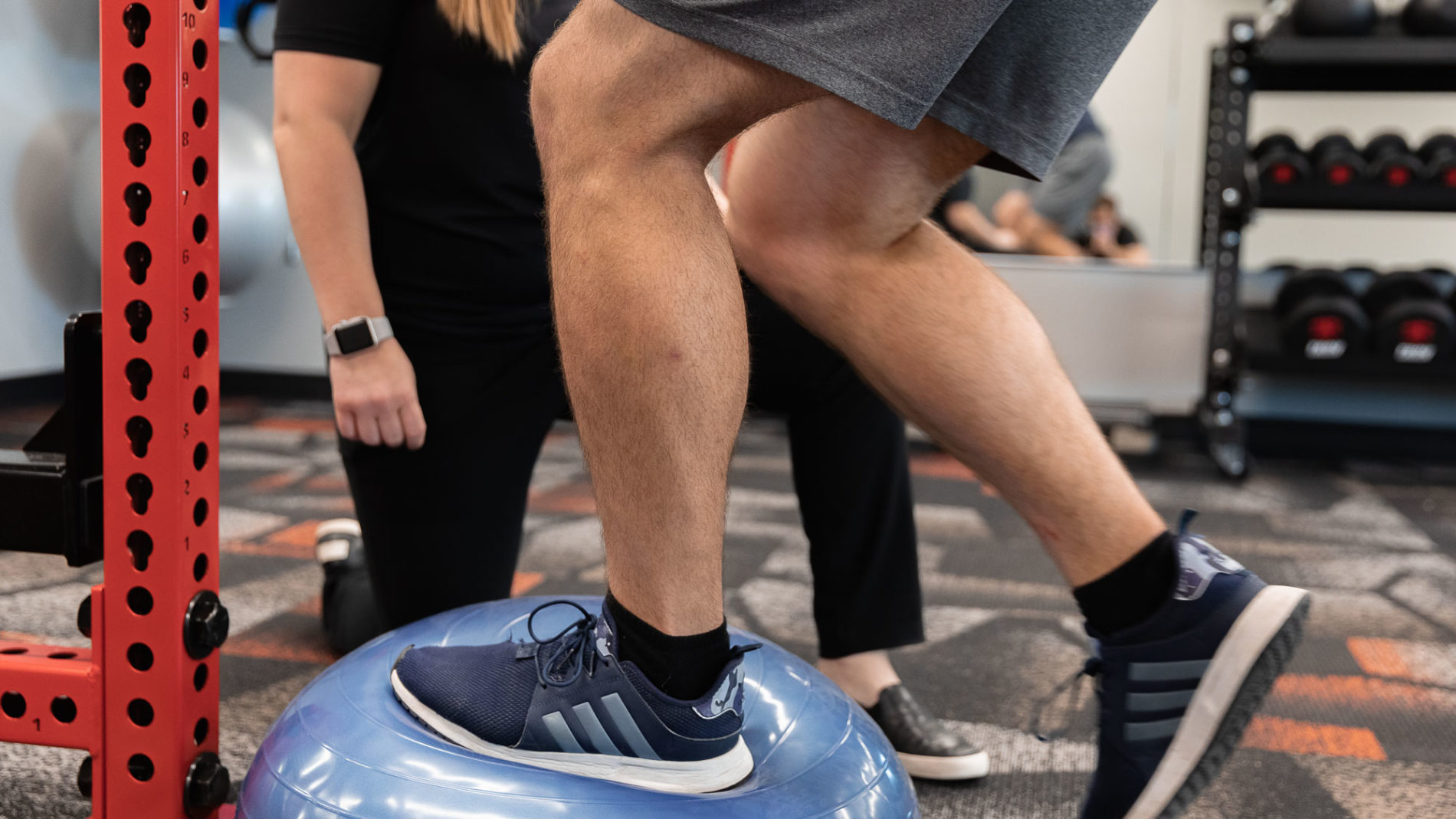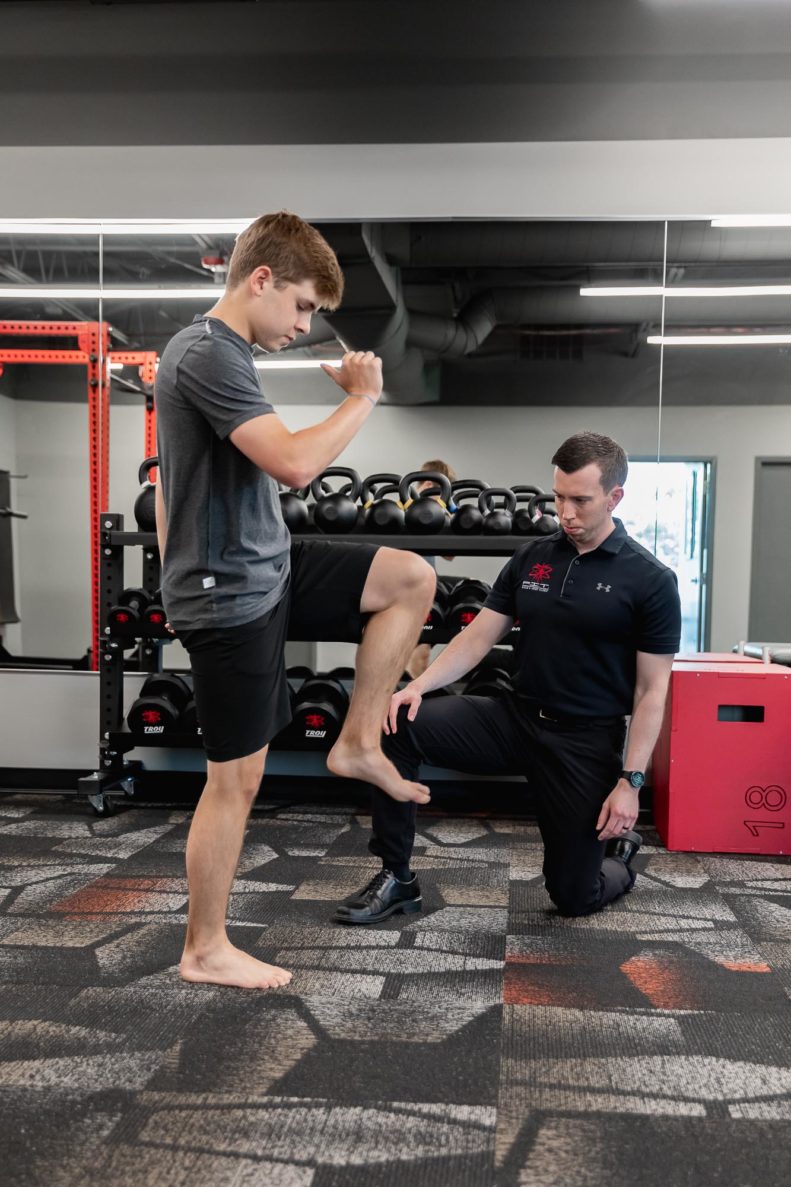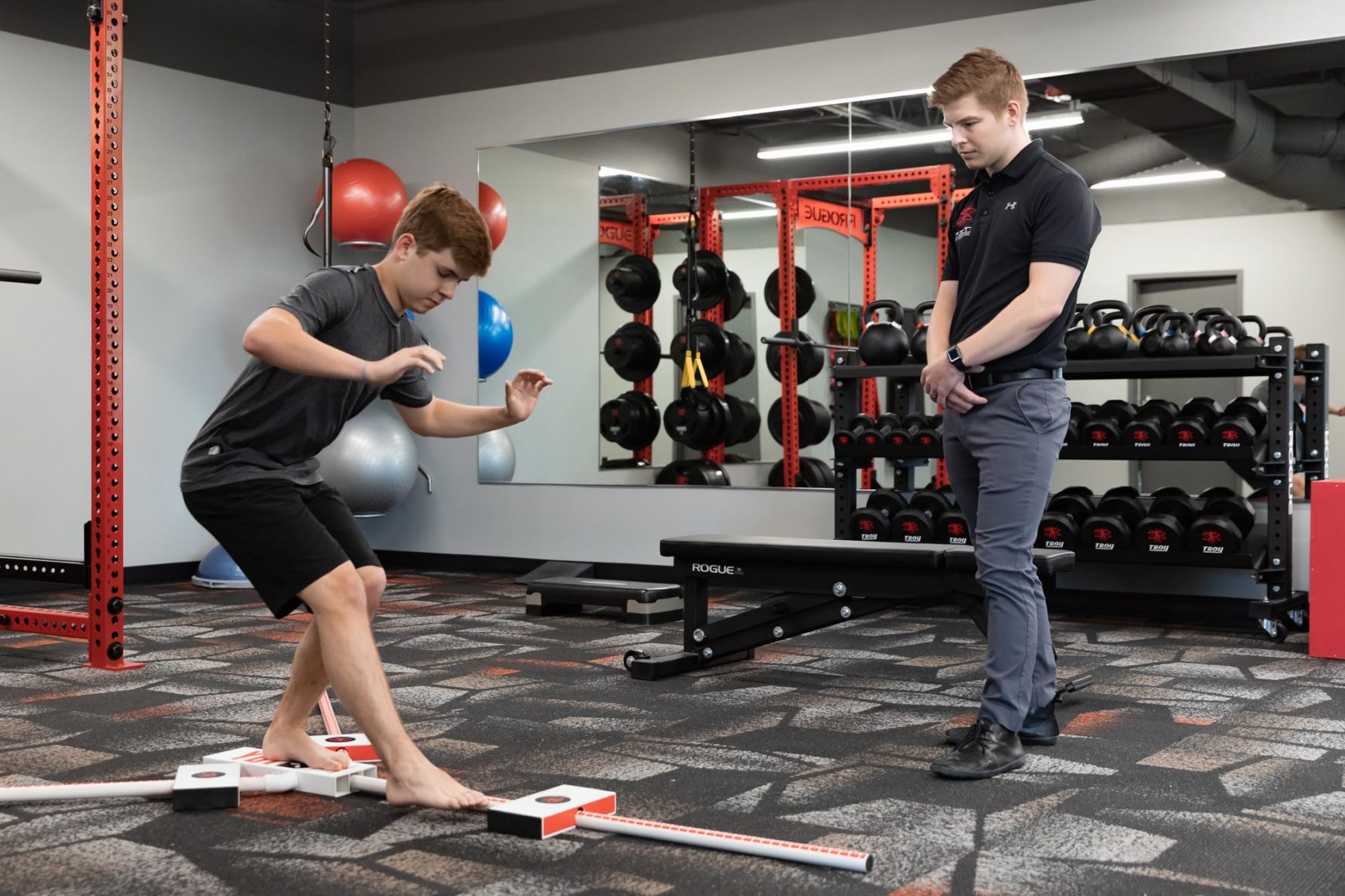How to Create a Sport-Specific Training and Injury Prevention Program in Kansas City
01 March 2020 — Lifestyle, Physical Therapy

In this day and age, more and more athletes are focusing on a single sport rather than evolving into multi-sport athletes. With younger athletes now turning toward becoming experts in a single playing field, we are seeing a rise in sport-specific injuries starting at an earlier age.
Common Sports Injuries We See From Track, Baseball, and Soccer →
That’s why learning how to create a sport-specific training and injury prevention program is so important. All too often, training programs focus on exercises that (a) aren’t beneficial to the end goal and (b) focus on more aesthetical growth rather than functional growth. However, with a proper training program, you can effectively prevent injuries by strengthening the body and improving the skills needed to become an overall better athlete.
Whether you're a coach, parent, or athlete, our team at F.I.T. Muscle & Joint Clinic believes that everyone involved in the training process should at least have a basic understanding of a sport-specific training program. To learn more, keep reading on how to create a training program that will help you enhance your sports performance.
What is sport-specific training?
Sport-specific training is more than just a buzzword created by trainers and coaches. It’s a model that focuses on understanding what an athlete needs to optimize growth in a sport. Used in both on and off-season programs, the purpose of sport-specific training is to effectively transfer that training onto the field.
But what many people fail to realize is that sport-specific training isn't just specific to the sport; it’s also specific to the athlete. Just because two athletes play the same sport and share the same position, that does not mean they should also have the same training program.
Therefore, understanding the needs of the sport/position while aligning those needs to your specific fitness gaps is the foundation for learning how to create a sport-specific training program in Kansas City.
In general, a sport specific training program include areas such as:
- Endurance
- Strength
- Speed
- Power
- Mobility & Stability
- Prehabilitation
- Injury Prevention
- Rehabilitation
- And more
Knowing that, let’s delve into a step-by-step process to help you build a program that’s right for you and your sport.
Step One: Fitness Assessment and Gap Analysis

Remember how we said you have to understand your fitness gaps as a baseline to create a sport-specific program? Well, a fitness assessment and gap analysis is exactly how you do so. It’s best that a professional trainer or fitness expert helps you with this part of the process followed by an injury prevention screen by a qualified physical therapist or chiropractor, since assessing yourself may be difficult on your own.
Here’s how it works:
First, you and your trainer will figure out your athletic end goal. Where do you want to be and what are the best methods to get there? When considering this goal, you should focus on the skill sets you need for your sport.
For example, if you’re a soccer player, the best goal may not be to increase sprint times since a lot of soccer is running on the field for a prolonged period of time. Instead, focusing on endurance and aerobic health is probably better.
With your goals in mind, a trainer then creates a series of fitness tests designed to reveal gaps in your skills and fitness. The gap analysis then comes from calculating the current fitness level and the level needed to reach the goal. The gap analysis can also uncover any movement disparities that could make you more prone to injury.
Once you complete this step, you can use the information to create your sport-specific training program.
Step Two: Building a strong foundation
Before you start loading on the weights or testing your speed limits, you will want to start by doing three things:
- Developing optimal functional movement patterns
- Improving mobility and range of motion
- Focusing on stability
Without those three components, you put yourself at risk for training with improper form, not maximizing the efficacy of your exercises, and developing injuries.
Developing optimal functional movement patterns
What are functional movement patterns and why are they so important?
Functional movement patterns are key to any kind of motion, whether it’s sports related or not. The key is that movement very rarely only uses a single muscle. Instead, your body contracts various muscles at once—some stretch and elongate while others stabilize the surrounding joints. This collaboration between muscles happens within a split second, which is why proper functional movement is important to keeping everything in balance.
A great way to practice functional movements is by first going through functional movements with your physical therapists or chiropractor followed by exercising with resistance bands (or even your own body weight) before adding weights. This allows you to focus on your form and get in the habit of practicing the right way. Keep in mind that practice doesn’t make perfect—practice makes permanent. If your body gets used to doing something the incorrect way, it’s going to be hard to switch it up.
Improving mobility and range of motion
Mobility and range of motion (ROM) are at the heart of injury prevention. Though some injuries come from sudden jerks and directional changes, many stem from the lack of mobility and ROM. A lot of injuries stem from not being able to move as optimally as the sport requires.
Going back to our soccer example, kicking requires the hip to flex in order to lift the leg. A big hindrance for hip flexion are weak joints and muscles that inhibit the proper range of motion. However, when you learn how to create a sport-specific training program that incorporates improving the mobility of those hip muscles, you can increase your ROM to kick more effectively.
You can also use mobility drills to mimic the movements you do during your sport. In doing so, you increase strength and power to enhance your performance.
4 Drills for Thoracic Mobility →
Focusing on stability
Rather than focusing on the movement itself, stability allows you to stabilize your joints and control the movement. With stability, you can prevent unwanted motions such as knee hyperextension.
When many people think of stability, they think only about the core. While core stability is crucial, your core isn’t the only muscle involved. However, keep in mind that there isn’t a muscle that is always a stabilizer muscle, but there are muscles that the body uses for this function more than others.
For example, when you do a barbell squat, your quadriceps (front of leg), hamstrings (back of leg), and gluteus maximus (large glute muscle) do the majority of the work. But it’s important to not neglect the abductor muscles, such as the gluteus medius, because they help stabilize your hips and thighs.
Without proper stability, your body turns to other methods like generating momentum to complete the movements. Over time, this overcompensation could affect how well you play the sport and could lead to sports-related injuries.
Step Three: Create an exercise plan designed for the sport

When figuring out how to create a sport-specific training program in Kansas City, this step is where many people get confused. It may be easy to browse the web and peruse social media for what’s popular or what “appears to work” without acknowledging your sport or your goals. That’s not ideal. You want to create a customized program that will benefit you most, not a one-size-fits-all method.
First, let’s talk about compiling exercises for your sport, starting with finding the right cardio exercises. Back to our soccer example, you may believe that sprinting back and forth will help you improve your performance on the field. While sprinting could definitely help with speed (so you can still implement it!), soccer isn’t necessarily a sprinting sport.
Unlike American football, where players use short bursts of speed and power, soccer requires leaner muscles and more endurance. You aren't running and kicking the ball in 15 to 30 second intervals; actually, you may be running back and forth for up to 45 minutes. Therefore when it comes to cardio training, working on long distance running may be more effective.
Common Running Injuries and How To Avoid Them →
At the same time, you also have to consider strength training. Strength training isn’t just about the exercises you do, especially since multiple exercises could benefit different sports. It’s more about weights and reps. If your sport requires you to be more bulky, you may want to focus on lifting heavy with lower reps.
On the other hand, if your sport is more endurance based, you may want to focus on lower weights with higher reps. You could even try out circuit training to create a more cardio-based strength regiment.
No matter which exercises you choose, all athletes should include a dynamic warmup before and cool down after each session. Any active movements like riding a stationary bike, walking lunges, jump rope, etc are good examples of a solid warmup. Something as simple as walking for 5 to 10 minutes after a workout constitutes a good cool down. These are important for increasing flexibility and stability, promoting a great ROM, and preventing injuries.
Whenever you’re creating your sport-specific training program here are a few things to consider:
Individuality: We can’t emphasize enough just how important it is to cater your program to your unique needs. You’re not going to grow as an athlete if you're basing your plan on someone who doesn’t have the same fitness gaps as you do.
Specificity: It wouldn’t be a sport-specific program if it’s not specific to the sport. That means you should understand exactly what skills a sport requires and base your exercises on them.
Generality: Along with specific exercises, you also want to incorporate general exercises for overall fitness. This is especially great for younger athletes or athletes with little training.
Variation and adaptation: Over time your body grows accustomed to the same exercises, so it’s important to switch it up. When you engage in different exercises, that causes stress (the good kind) on your body, which leads to strengthening and adaptability.
Overloading: Your goal should be to always get stronger and better. When strength training, overloading allows your muscles to continue to grow. By overloading, we don’t mean going so heavy that you compromise your form. We mean gradually increasing the intensity of your workout. You can do this by increasing weight, increasing reps, reducing time between reps, adding more sets, and expanding your range of motion.
Rest and recovery: No matter how serious you are, you should never train every day. Overtraining could be detrimental for your health and progress. It can even lead to injuries that could stop you from playing your sport altogether—and then what would the point be? Recovery allows your body to rest and rebuild. Oftentimes, you’ll feel stronger coming back from a recovery day.
Let F.I.T. Muscle & Joint Clinic help you learn how to create a sport-specific training and injury prevention program in Kansas City
If you’re in the Kansas City area, our expert team of chiropractors, physical therapists, and sports-medicine experts is here to help you learn how to create a sport-specific training and injury prevention program catered around your goals. We specialize in ensuring your muscles and joints are in tip-top shape to keep you playing for years to come.
Have a sports-related injury?
Whether you’re suffering from joint issues and need chiropractic rehabilitation exercises or need physical therapy services, F.I.T. Muscle & Joint Clinic offers a wide-range of sports medicine and performance services to get you back on track.



